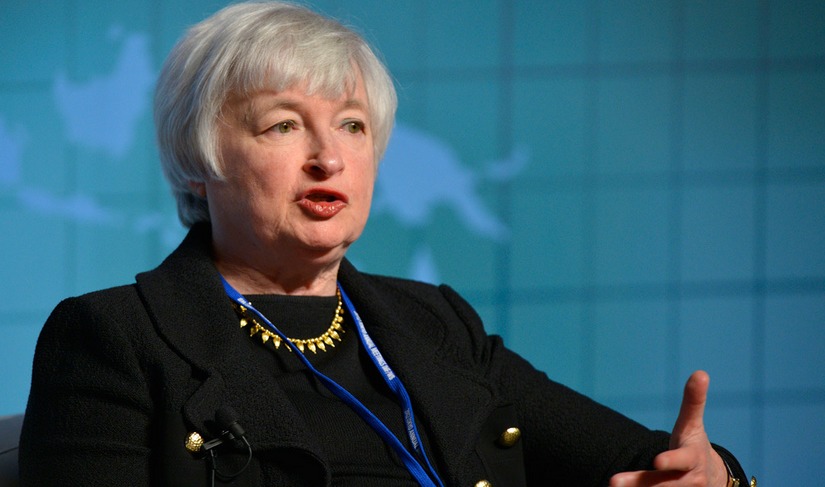By: Brie Williams, Head of Practice Management, State Street Global Advisors’ Blog
Environmental, social, and governance (ESG) investing has moved from a check-the-box component to a must-have for many portfolios, fueled by standardized ESG data and an explosion of ESG funds. But the increased scrutiny ESG faces may make it challenging to talk about. These three steps may help advisors have more productive conversations with clients.
The SEC has created the Climate and ESG Task Force in the Division of Enforcement to oversee a division-wide effort to establish new disclosure requirements for funds that are marketed as ESG-focused.1 That spotlight may make it challenging to talk about ESG with clients.
These three steps may lead to more productive conversations.
1. Put ESG Investing in Context: ESG has strong performance and support.
As ESG reporting moves toward standardized global disclosure, ESG funds’ asset flows and performance remain steady:
- ESG funds are one of the fastest growing segments of the investment industry. Since the beginning of 2020, global sustainable ETF assets grew by 259%, compared to 34% growth in non-sustainable funds.2
- In the face of continued market turbulence, investors in sustainable funds stayed the course. Assets in global sustainable funds grew by 2.5% over the first half of the year while assets in non-sustainable funds shrank 0.4%.3
- ESG funds, in general, tend to be underweight energy and overweight technology, both of which have been headwinds for ESG in 2022. However, ESG can offer attractive long-term performance and risk mitigation, with 33% of sustainable ETFs performing in the top quartile versus their peer groups over the past 5 years.4
Polls show strong support for ESG investing.
- More than two-thirds of people asked want their employer to offer pension plans that incorporate ESG factors.5
- 83% of consumers — not just women and millennials — think companies should be actively shaping ESG practices.6
- 91% of business leaders believe their company has a responsibility to act on ESG issues.7
And 300 respondents to a recent survey from the Index Industry Association, on average, expect:
- 40% of portfolios to include ESG elements 12 months from now, a 13 percentage point increase from a 2021 survey.
- 64% of portfolios to include ESG elements a decade from now, up from 52% in the 2021 survey.
- 76% of bond portfolios to incorporate ESG factors, up from just 42% in 2021.8
2. Share our definition of ESG: It’s about creating value, not pushing values.
Loose definitions of E, S, and G are the root of misunderstandings. Broadly, here’s what the letters stand for:
- Environmental: Assesses how a company performs as a steward of the natural environment, including energy consumption, response to climate change, water management, and air quality.
- Social: Examines a company’s relationships with employees, suppliers, customers, and the communities in which it operates, from working conditions and health and safety issues to community impact.
- Governance: Evaluates a company’s management, including executive compensation, board composition, lobbying efforts, and philanthropy.
The point is, rather than representing values in and of themselves, these material ESG considerations are factors to consider when pursuing long-term value. And, notably, the data behind these factors continues to improve.
At State Street Global Advisors, we believe that the consideration of ESG Factors can aid investment decision making, help manage investment risk, and facilitate the generation of long-term value in our clients’ portfolios.9 Managing investment risk means quantifying the impact of potential losses due to climate change exposure, unsafe working conditions, or excessive executive compensation. In our view, ESG investing is first and foremost a risk-management tool.
Now, your client might ask, isn’t that the goal of any investment strategy? And they’d be right. Assessing material ESG issues simply enriches traditional financial research, enabling you to better manage risk and improve long-term risk-adjusted investment returns.
ESG investing isn’t one thing, or three things, or a set of investment strategies. It’s a process designed to mitigate risk and create long-term value — a lens to view investments through, not an end in itself. In this sense, ESG investing is more than a trend; it’s the way forward.
3. Lead with questions, not answers: Personalize ESG solutions.
Learning more about your clients helps create a personalized ESG solution, so ask:
What does ESG investing mean to you?
There is no one-size-fits-all approach to talking about ESG investing. Some clients will be familiar with ESG investing. Others may be confused by the acronym or confuse ESG investing with impact investing or socially responsible investing. Share what you know and tailor a solution that fits the unique financial needs of the individual client.
Are you interested in finding more outperforming investments?
ESG funds’ strong financial performance in recent years has debunked the myth that investing through an ESG lens means sacrificing investment performance. Because ESG tends to focus on a company’s long-term strategy, using ESG criteria to invest can help position portfolios to deliver long-term value.
Does pursuing long-term value extend to creating a legacy?
Yes, creating portfolio value is the number one goal, but the many ESG strategies also allow investors to tailor their portfolios away from investments they may want to avoid, such as tobacco or weapons, and toward themes they may want to incorporate, like climate change or racial and gender equity.
This becomes more profound with legacy planning, as clients think about passing their money along to the next generation, who may tend to be more engaged on ESG. ESG investing isn’t a short-term trend, or a tactical move to implement new funds. It’s about taking a longer-term view of investing — maybe one with generational implications.
Looking Ahead to the Future of ESG Investing
As ESG investing evolves, the opportunity set will change with it.. ESG data is becoming more robust and transparency is increasing. As the industry moves toward standards of best practice, there will be more ESG products to choose from — and more resources available to help investors understand and select ESG funds.
Discussing ESG with clients can help them understand the goals behind ESG investing — and ultimately put you in a better position to surface investment opportunities.
As with all investing, creating the right ESG solution for each client means discussing their investment objectives and risk tolerance, identifying suitable strategies, and tracking progress toward long-term goals. Providing portfolio examples that connect to your clients’ objectives can help you begin to reposition portfolios. We can help here, too.
Originally Posted October 27th, 2022 on the State Street Global Advisors’ Blog
PHOTO CREDIT: https://www.shutterstock.com/g/Pcess609
Via SHUTTERSTOCK
1 SEC Response to Climate and ESG Risks, April 11, 2022.
2 Morningstar, as of June 30, 2022, sustainable fund by prospectus.
3 Jon Hale, “Sustainable Investors More Likely to Stay the Course,” Morningstar, August 1, 2022.
4 Morningstar, as of September 30, 2022 – Sustainable overall as determined by Morningstar. Peer group = Morningstar category.
5 Harris poll of US savers conducted on behalf of Nuveen in 2021, cited in Frances Schwartzkopff, “GOP Fury Over ESG Triggers Backlash With US Pensions at Risk,” Bloomberg, as of August 25, 2022.
6 PwC Consumer Intelligence Series, as of June 2, 2021.
7 PwC Consumer Intelligence Series, as of June 2, 2021.
8 Michael Taffe, “Managers Still Bullish on ESG: Survey,” FundFire, as of August 1, 2022.
9 State Street Global Advisors ESG Investment Statement (June 2022)
Disclosure
The views expressed in this material are the views of the SPDR Practice Management team through the period ended October 19, 2022 and are subject to change based on market and other conditions. This document contains certain statements that may be deemed forward-looking statements. Please note that any such statements are not guarantees of any future performance and actual results or developments may differ materially from those projected.
The information provided does not constitute investment advice and it should not be relied on as such. It should not be considered a solicitation to buy or an offer to sell a security. It does not take into account any investor’s particular investment objectives, strategies, tax status or investment horizon. You should consult your tax and financial advisor.
All information is from SSGA unless otherwise noted and has been obtained from sources believed to be reliable, but its accuracy is not guaranteed. There is no representation or warranty as to the current accuracy, reliability or completeness of, nor liability for, decisions based on such information and it should not be relied on as such.
Investing involves risk including the risk of loss of principal.
The returns on a portfolio of securities which exclude companies that do not meet the portfolio’s specified ESG criteria may trail the returns on a portfolio of securities which include such companies. A portfolio’s ESG criteria may result in the portfolio investing in industry sectors or securities which underperform the market as a whole.
The trademarks and service marks referenced herein are the property of their respective owners. Third party data providers make no warranties or representations of any kind relating to the accuracy, completeness or timeliness of the data and have no liability for damages of any kind relating to the use of such data.
The whole or any part of this work may not be reproduced, copied or transmitted or any of its contents disclosed to third parties without SSGA’s express written consent.



